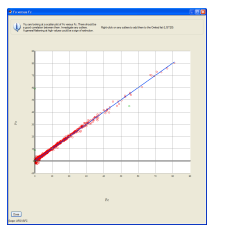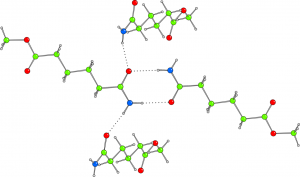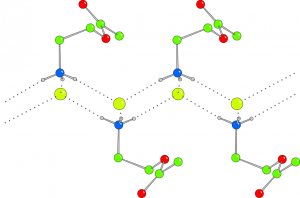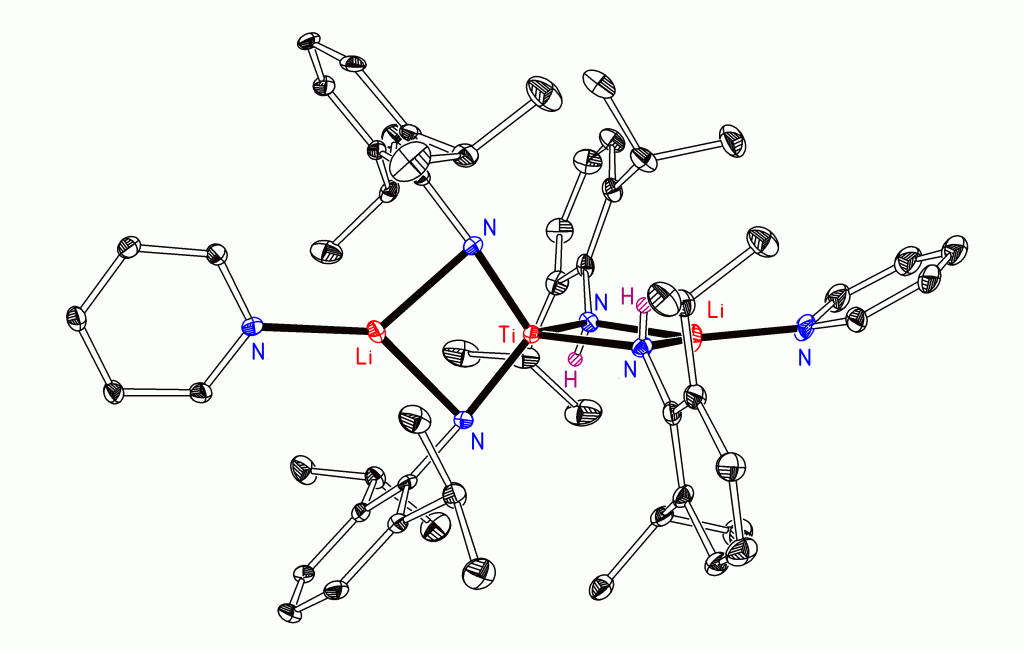 Emma completed her Part II in 2011 in Chem. Cryst., but it seems we can’t get rid of her! Ever cheerful, she brings a spark of life to the lab and has come back for a bit to encourage us to write up the outstanding papers from her thesis, in particular her work chalcones and on the modulated phase of Barluenga’s reagent. Since her prize winning poetry performance at the BCA, we keep expecting her to start rapping…
Emma completed her Part II in 2011 in Chem. Cryst., but it seems we can’t get rid of her! Ever cheerful, she brings a spark of life to the lab and has come back for a bit to encourage us to write up the outstanding papers from her thesis, in particular her work chalcones and on the modulated phase of Barluenga’s reagent. Since her prize winning poetry performance at the BCA, we keep expecting her to start rapping…
Acta Cryst. (2012), E68, o593-o594. [ doi:10.1107/S1600536812003303 ]
The title compound, C7H13NO3, adopts an approximately planar conformation. The torsion angles in the aliphatic chain between the carbonyl group C atoms range from 172.97 (14) to 179.38 (14)° and the r.m.s. deviation of all non-H atoms is 0.059 Å. The crystal packing is dominated by two strong N-H···O hydrogen bonds involving the amide groups and forming R22(8) rings and C(4) chains. Overall, a two-dimensional network parallel to (100) is formed. A weak intermolecular C-H···O interaction is also present.
Electronic reprints
- Oxford University Research Archive [direct pdf]
Publisher’s copy
Acta Cryst. (2012), E68, o595. [ doi:10.1107/S1600536812003297 ]
In the title compound, C4H10NO2+·Cl–, the central ethylene bond of the cation adopts a gauche conformation. The three H atoms of the -NH3+ group are engaged in strong and highly directional intermolecular N-H···Cl hydrogen bonds, which result in a tape-like arrangement along [010] of the respective ion pairs. In addition, weak intermolecular C-H···Cl and C-H···O interactions are present.
Electronic reprints
- Oxford University Research Archive [direct pdf]
Publisher’s copy
 The CRYSTALS v14.40b installer is now available to download for the Windows platfom.
The CRYSTALS v14.40b installer is now available to download for the Windows platfom.
[Update: 14.40b fixes failure when importing reflections from Agilent cif_od files]
Selected highlights include:
- New data import tools for most diffractometer types.
- Asymmetric distance, Uij and adp vibration restraints.
- Automatic lookup of neutron scattering factors.
- Calculation of s.u’s on torsion angles in #TORSION.
- Consistent updating of weights when importing and re-importing reflection data.
- Punch of lists 2, 3, 4, 13, 23, 25, 28, 29, 31 is now possible (missing generalised 6 & 30 still).
- SQUEEZE: Fix compatibility with recent versions of Platon.
- Command line users from France will be please to learn that you can now use ampersand (&) as well as # or \ to prefix a command. This symbol can be generated on French keyboards without using shift.
- Numerous other bug fixes…
Presented by: Dr. Andrew D. Schwarz
Research Leader: Prof. Philip Mountford
Published: Chemical Science
Inspired by the development of high-energy, early transition metal-ligand multiply-bonded systems, we targeted the unprecedented classes of bis(imido) and tris(imido) compounds of the group 4 metals (to give the first example of a group 4 metal simultaneously containing two or three multiply-bonded ligands). The product above was prepared by deprotonation with methyl lithium of a mono(imido) bis(amido) sython [Ti(NAr)(NHAr)2(py)2] to form the supposed intermediate “Li2[Ti(NAr)3(py)x]” which undergoes 1,2-N–H addition of ArNH2 across one of the Ti‑NAr linkages. This represents the first bis(imido) complex of a group 4 metal, and indeed the first example of any compound of these metals simultaneously containing two or more metal-ligand multiple bonds to dianionic ligands.


